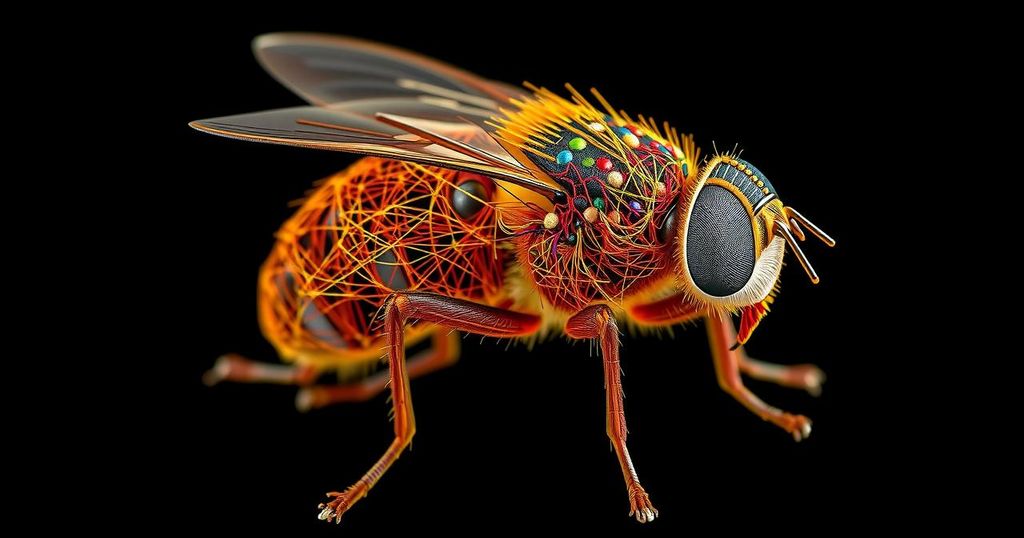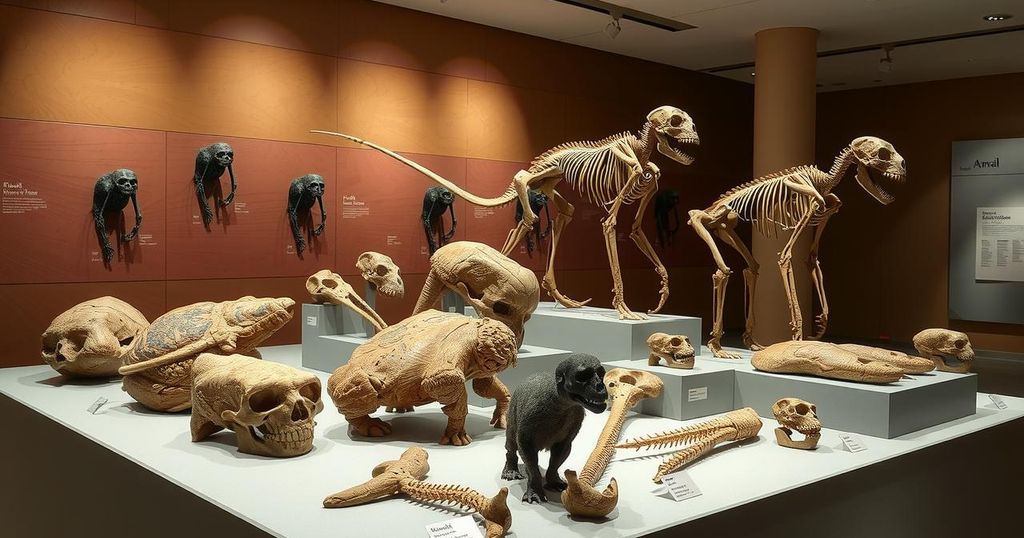Mapping the Mysteries: Unveiling the Fruit Fly’s Intricate Connectome
Scientists have unveiled the complete connectivity map of a fruit fly’s brain, detailing 54.5 million connections among 139,255 neurons in a project spanning nearly 20 years. With this connectome, they shed light on how information flows within its tiny brain, significantly enhancing our understanding of neural networks. The effort combines electron microscopy and collaborative proofreading, demonstrating immense progress in connectomic research.
In a groundbreaking achievement, scientists have intricately mapped the entire neural network of a fruit fly, revealing an astonishing 54.5 million connections among approximately 139,255 neurons. This monumental task, revealed in nine illuminating papers published in the journal Nature, presents not just the artistry of nature but a dizzying landscape of neural pathways crammed into a brain no larger than a poppy seed. This connectome elucidates how information travels through the fly’s tiny brain, shedding light on behaviors pivotal to its existence: from flapping wings to evading predators.
The journey to unveil this connectome involved painstakingly aligning more than 7,000 electron microscopy slices, aided by machine learning technology, while a dedicated team of researchers meticulously verified the details by hand. Their efforts stretched nearly two decades, overcoming initial skepticism—many believed such a deeply intricate mapping was more the stuff of science fiction than scientific reality. Yet the results offer profound insights, highlighting the roles of specific neurons and enabling simulations of sensory processing within this miniature brain, potentially opening doors to understanding more complex brains in vertebrates.
Critically, this endeavor is a testament to human ingenuity, unity, and perseverance. Olaf Sporns, who coined the term “connectome,” reflects on how ambitious aspirations can lead to remarkable breakthroughs. The cross-pollination of ideas and methodologies across different laboratories emphasized collaboration, while computational neuroscience began to bridge the gap from hypothetical to tangible understanding. As researchers build computer models simulating neural activity, future explorations could drastically widen our comprehension of how varied species process information in their unique worlds.
The concept of mapping neural connections, or connectomes, has evolved significantly since the term was first introduced in 2005. The fruit fly, known scientifically as Drosophila melanogaster, serves as a vital model for understanding neural networks due to its simplicity compared to larger organisms. Previous efforts in mapping connectomes have provided foundational knowledge, but this fruit fly’s complete connectome represents the largest and most detailed achievement to date. By combining advanced imaging techniques and collaborative human effort, researchers have opened new avenues for exploring neural pathways and processing strategies in both invertebrates and vertebrates.
In conclusion, the mapping of the fruit fly’s connectome is not merely a scientific milestone; it symbolizes the culmination of years of collaborative research, imagination, and technological innovation. As we advance from this impressive base, the insights gained could illuminate the path to unraveling the mysteries of more complex brains. The work not only validates the value of connectomic research but also inspires a vision for future discoveries across various species, potentially reshaping our understanding of cognition and behavior in the animal kingdom.
Original Source: www.sciencenews.org




Post Comment